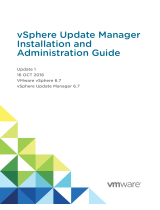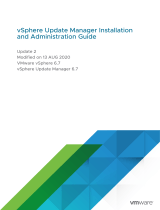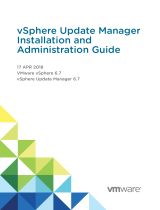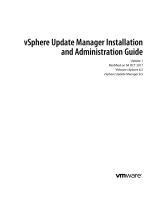
About This Manual.......................................................................................................................... 5
Revision History..................................................................................................................................................................... 5
1 Overview..................................................................................................................................... 6
Dell EqualLogic MEM Architecture..................................................................................................................................... 6
Dell EqualLogic MEM Configuration Model........................................................................................................................6
Determining the Number of Sessions..................................................................................................................................7
Related Documentation........................................................................................................................................................ 8
2 Installing Dell EqualLogic MEM......................................................................................................9
Obtaining the MEM Installation File.................................................................................................................................... 9
iSCSI Network Configuration Requirements......................................................................................................................9
Using the Setup Script for Network Configuration......................................................................................................... 10
Configuring Your Network for the Dell EqualLogic MEM ...............................................................................................11
Dell Best Practices for iSCSI Networking................................................................................................................... 12
Installation Considerations...................................................................................................................................................12
Installing Dell EqualLogic MEM on Your VMware ESXi Host..........................................................................................13
Installing MEM Using vCenter Update Manager........................................................................................................13
Installing MEM Using the setup.pl Script.................................................................................................................... 14
Installing MEM Using the vSphere CLI .......................................................................................................................15
Removing the Dell EqualLogic MEM ................................................................................................................................ 16
Removing MEM Using the setup.pl Script.......................................................................................................... 16
Removing MEM Using the vSphere CLI..................................................................................................................... 16
Verifying the Installation...................................................................................................................................................... 17
Performing an Upgrade Installation....................................................................................................................................17
Disabling MEM...................................................................................................................................................................... 17
Using the MEM with AutoDeploy.......................................................................................................................................18
3 Configuring the Dell EqualLogic MEM........................................................................................... 19
EHCM Configuration File.................................................................................................................................................... 19
iSCSI Connection Count.....................................................................................................................................................20
EqualLogic MEM Configuration Using vSphere CLI Commands.................................................................................. 20
Viewing Configuration Values............................................................................................................................................ 20
Setting Configuration Values............................................................................................................................................. 20
EqualLogic MEM Configuration Using Host Profiles....................................................................................................... 21
4 Troubleshooting......................................................................................................................... 22
Log Files................................................................................................................................................................................22
CLI Commands for Troubleshooting................................................................................................................................. 22
Listing Statistics.............................................................................................................................................................22
Listing Adapters............................................................................................................................................................. 23
Listing Sessions..............................................................................................................................................................23
Listing VVol Statistics................................................................................................................................................... 23
Troubleshooting Common Issues...................................................................................................................................... 24
Contents
Contents 3























